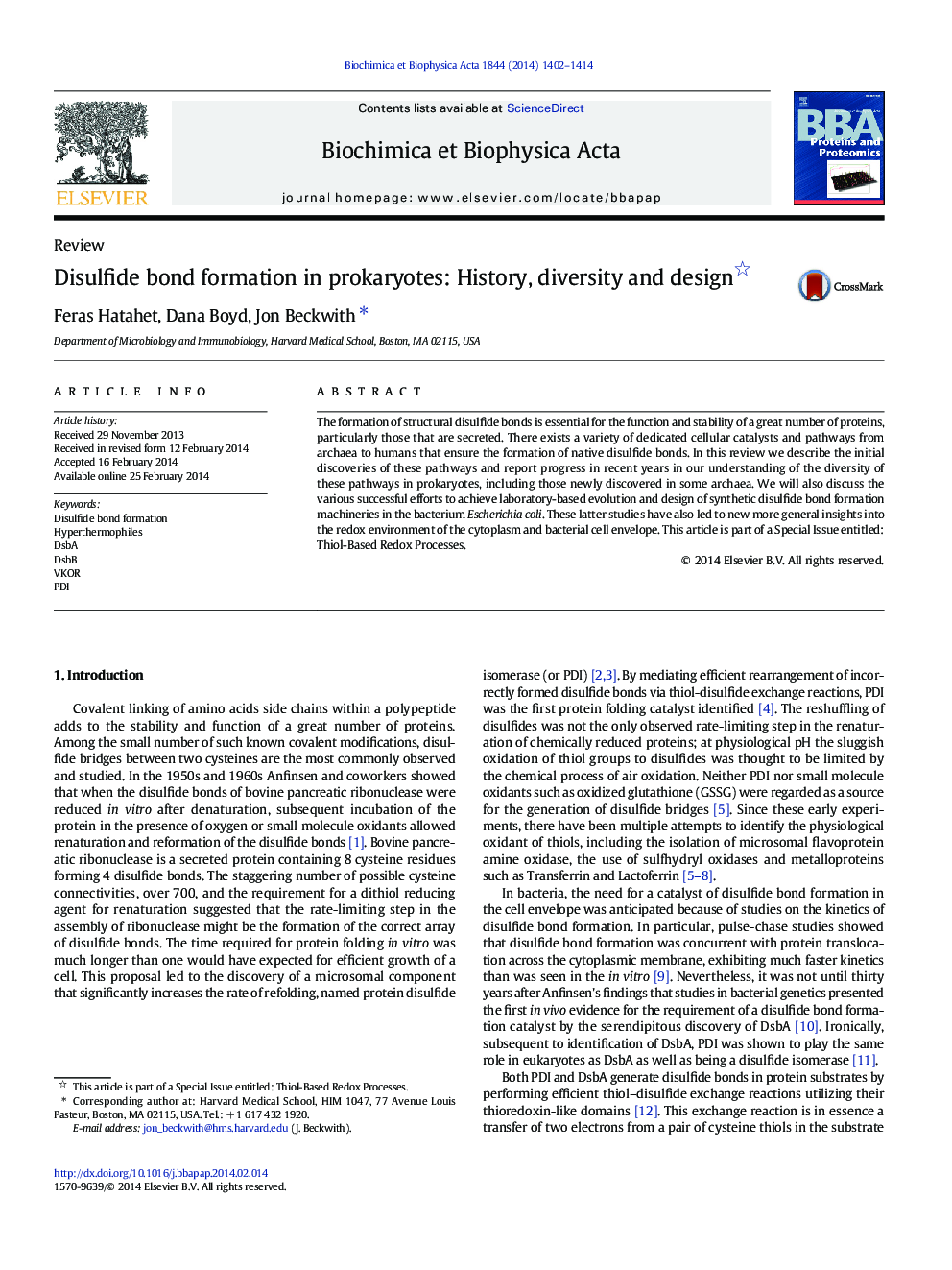| Article ID | Journal | Published Year | Pages | File Type |
|---|---|---|---|---|
| 1177862 | Biochimica et Biophysica Acta (BBA) - Proteins and Proteomics | 2014 | 13 Pages |
•Disulfide bond formation in proteins is a catalyzed process.•Prokaryotes show diversity in their capacity to form protein disulfide bonds.•Novel redox pathways can be revealed by genetic selection and rational design.
The formation of structural disulfide bonds is essential for the function and stability of a great number of proteins, particularly those that are secreted. There exists a variety of dedicated cellular catalysts and pathways from archaea to humans that ensure the formation of native disulfide bonds. In this review we describe the initial discoveries of these pathways and report progress in recent years in our understanding of the diversity of these pathways in prokaryotes, including those newly discovered in some archaea. We will also discuss the various successful efforts to achieve laboratory-based evolution and design of synthetic disulfide bond formation machineries in the bacterium Escherichia coli. These latter studies have also led to new more general insights into the redox environment of the cytoplasm and bacterial cell envelope. This article is part of a Special Issue entitled: Thiol-Based Redox Processes.
